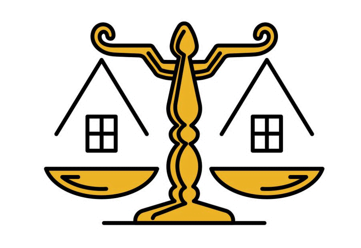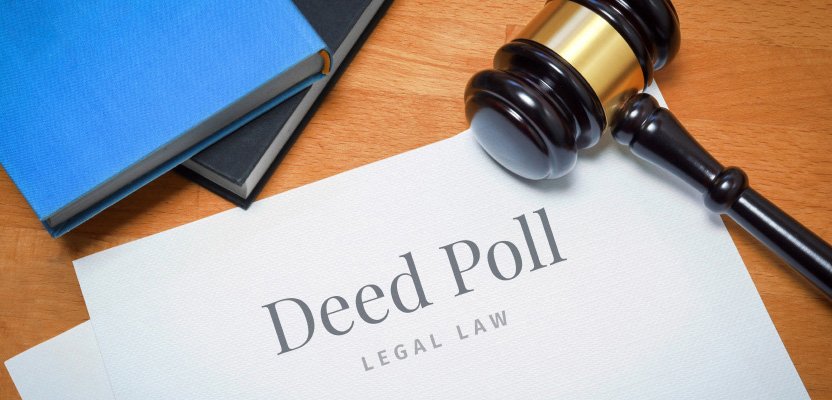Effortless Name Change: How to Change Name with Deed Poll Successfully
Introduction
Names are a fundamental part of our identity. Whether due to marriage, divorce, personal preference, cultural reasons, or gender transition, many people find themselves needing to change their name at some point in life. However, the process of legally changing one’s name must be handled properly to ensure that official documents reflect the new identity.
One of the most recognized methods of legally changing a name is through a Deed Poll. A Deed Poll is a legal document that proves a change of name and allows individuals to update their records with government agencies, banks, and other institutions.
In this article, we will explore how to change a name with a Deed Poll, the legal implications, and the necessary steps to ensure a smooth transition.
Understanding Deed Poll
What is a Deed Poll?
A Deed Poll is a legally binding document that declares an individual’s commitment to using a new name. It serves as evidence that a person has relinquished their old name and intends to use their new name consistently.
This document is widely recognized by government institutions, banks, schools, and employers as proof of a name change. Unlike a birth certificate or marriage certificate, a Deed Poll specifically records the act of changing one’s name, making it a primary tool for legally updating identification documents.
Is a Deed Poll Legally Binding?
Yes, a Deed Poll is legally binding, provided it meets the following criteria:
It must be signed and dated by the individual changing their name.
It must include a clear declaration of the new name and the renouncement of the old name.
It must be witnessed by at least one person (or more, depending on the jurisdiction).
Once these conditions are met, the document can be used to update records with official institutions.
Who Can Change Their Name with a Deed Poll?
Generally, anyone can change their name through a Deed Poll, but there are some restrictions.
Eligibility Requirements
Adults (18 and above): Any adult can change their name without restriction, provided it is not for fraudulent or illegal purposes.
Minors (Under 18): A parent or legal guardian must apply for a Deed Poll on behalf of a child. In some cases, consent from both parents is required.
Restrictions on Name Changes
Although a person is free to choose a new name, there are some legal restrictions:
The name must not be offensive or obscene.
The name must not contain symbols or numbers (e.g., @ or 123).
The name should not be misleading, such as adopting a title like ‘Doctor’ or ‘Lord’ without entitlement.
Step-by-Step Process of Changing Your Name with a Deed Poll
1. Drafting the Deed Poll
The Deed Poll must contain the following key elements:
Your old name (the name currently in official records).
Your new name (the name you intend to use).
A declaration stating your intention to use the new name exclusively.
Your signature and the date.
2. Executing the Deed Poll
To make the document legally binding:
It must be signed in the presence of a witness.
The witness must be a person of legal capacity, such as a lawyer, notary public, or professional.
The witness should also sign and provide their details.
3. Registering the Deed Poll (If Required)
Some jurisdictions require the Deed Poll to be registered with the government or court.
If required, it may be published in an official gazette to notify the public of the name change.
4. Notifying Government and Private Institutions
Once the Deed Poll is executed, you must notify relevant agencies to update your documents, including:
National Identity Database: Update your passport, driver’s license, and national ID.
Banks and Financial Institutions: Update your name in bank records and insurance policies.
Educational Institutions: Update certificates, transcripts, and school records.
Employers: Provide proof of name change to HR departments.
Failure to update these records may lead to complications in using the new name.
Legal Implications and Challenges
While changing a name is generally straightforward, there are some legal implications.
Marriage and Divorce
A married person changing their name does not necessarily need a Deed Poll if they are adopting their spouse’s name.
However, if they wish to use an entirely different name after marriage or divorce, a Deed Poll is required.
Criminal and Fraudulent Intentions
A name change cannot be used to avoid debts, criminal prosecution, or escape legal obligations.
Authorities have the right to refuse a name change if fraud is suspected.
Case Law Examples on Deed Poll and Name Change
1. Re Parrott (1946)
In this case, the court upheld the principle that a Deed Poll is sufficient evidence of a name change, provided it is executed properly.
2. Cocks v Manners (1871)
The court ruled that a person’s name change must not be used to deceive or commit fraud, reinforcing the legality of Deed Polls in good faith name changes.
Common Mistakes and How to Avoid Them
1. Errors in Documentation
Mistakes such as misspellings, incorrect signatures, or missing witness details can lead to rejection of the Deed Poll.
2. Not Informing Relevant Authorities
Failure to update official documents can cause discrepancies in identification, making it difficult to travel, open bank accounts, or obtain government services.
3. Choosing an Unacceptable Name
Avoid choosing a name that violates legal restrictions, as it may not be accepted.
One of the most recognized methods of legally changing a name is through a Deed Poll. A Deed Poll is a legal document that proves a change of name and allows individuals to update their records with government agencies, banks, and other institutions.
In this article, we will explore how to change a name with a Deed Poll, the legal implications, and the necessary steps to ensure a smooth transition.
- By Deed Poll, you can choose to change forenames, surnames, and middle names as well as being able to add and remove names. You can also rearrange current forenames or alter spellings. You can choose to change your name to almost anything, although there are several basic conditions that your new name must meet.
- Both adult’s and children’s names can be changed. However, to change a child’s name who is under 16 years of age, a person holding parental responsibility for them must apply and all those with parental responsibility must give their consent to the name change.
- Upon execution, a Deed Poll enables you to formally change your name on official records such as your passport, driving licence, tax and National Insurance records, bank and credit cards, etc. Since one of the declarations is to use your new name at all times, you must notify all organisations and departments that hold your details that your name is changed.
Your birth certificate, marriage certificate, and educational certificates cannot be changed because these documents are “matter of fact”. This means that they were correct at the time that they were issued. However, under certain circumstances it is possib


